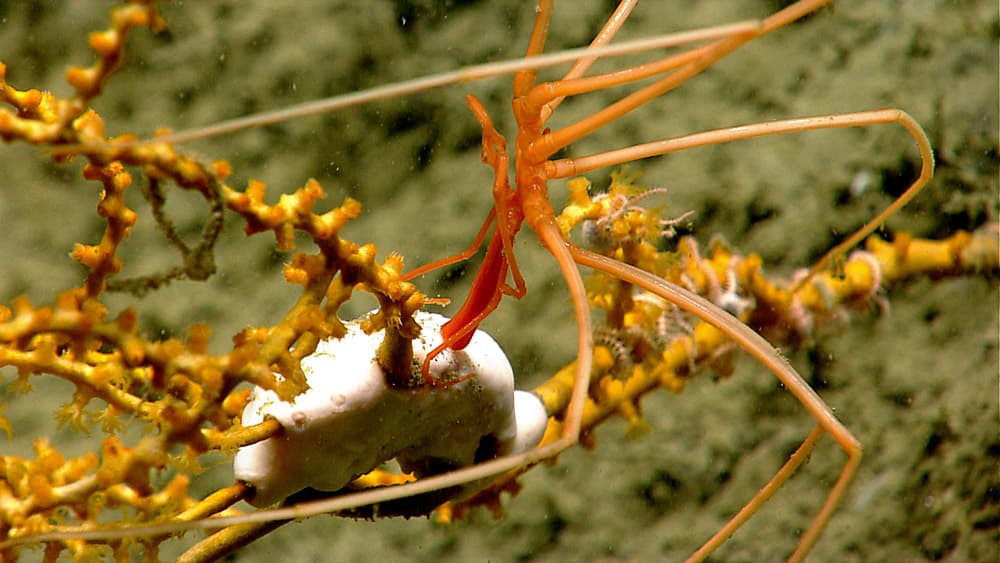
Conservationists Push For Atlantic Ocean National Monument
Conservationists Push For Atlantic Ocean National Monument. Undersea ravines deeper than the Grand Canyon, submerged mountains rising thousands of feet from the ocean floor and forests of kelp and coral would become the first marine national monument in the Atlantic ocean if conservationists have their way.
The proposal to protect a pristine ecosystem undamaged by heavy fishing and pollution in the Gulf of Maine and canyons and peaks off Cape Cod – where vivid coral has grown to the size of small trees over thousands of years – would mirror the massive conservation efforts that have already taken place in the Pacific Ocean. Conservationists Push For Atlantic Ocean National Monument
“We have an opportunity to permanently protect two of our nation’s greatest ocean treasures, right off our coast,” said Priscilla Brooks, the Conservation Law Foundation’s director of ocean conservation.
Environmental groups want President Barack Obama to permanently protect Cashes Ledge, the underwater mountain and offshore ecosystem in the Gulf of Maine, and the New England Coral Canyons and Seamounts, the chain of undersea formations about 150 miles off the coast of Massachusetts.
But Maine Gov. Paul LePage and others oppose the effort to protect the two sites, together totaling about 6,000 square miles, because of the potential impact on fishermen.
LePage, a Republican, also takes issue with the president’s authority under the Antiquities Act to designate monuments, calling it a sweeping power that provides few procedural protections to those who are most likely to be affected.
“These National Marine Monuments serve only one purpose- excluding commercial fishing activity from certain segments of the ocean,” he wrote in a letter to Obama last month. He also urged the president to consult with fishermen who make their living in the Gulf of Maine.
Four existing marine monuments – a designation applied only to areas of outstanding scientific, cultural, conservation and aesthetic value – were established by President George W. Bush. Obama expanded one, the Pacific Remote Islands Marine National Monument, last year.
The Pacific monuments cover more than 330,000 square miles of ocean, according to the National Oceanic and Atmospheric Administration. The rules for each differ slightly, though typically commercial fishing and resource extraction such as drilling and mining are prohibited, NOAA said.
NOAA plans to hold a town hall meeting in Providence on Tuesday to discuss possible protections for three of the deep-sea canyons and four seamounts, which it says “create unique habitats supporting tremendous biodiversity and fragile ecosystems.”
There are two more canyons that are not contiguous to the three mentioned by NOAA. Conservationists and other supporters plan to attend the meeting at the Providence Marriott Downtown to press for all five canyons, the four nearby seamounts and Cashes Ledge to be included, said Roger Fleming, a staff attorney at Earthjustice. The Conservation Law Foundation, National Geographic Society, the Pew Charitable Trusts, Natural Resources Defense Council, and other groups support the proposal.
“These are some of the last places that haven’t been spoiled by fishing and human development,” said Peter Baker, who directs U.S. Oceans, Northeast for Pew. “We’re hopeful this is the right time, for the right places, for the right reasons.”
Groups representing the fishing industry have taken issue with the project as a whole, but there appears to be more opposition to protecting Cashes Ledge than the more remote canyons and seamounts.
Robert Vanasse, executive director of the fishing advocacy group Saving Seafood, said the monument proposal overlooks existing protections for Cashes Ledge and would remove local and expert input from the process. Bottom trawling and dredging have been banned there for more than a decade.
“There shouldn’t be a couple of people sitting around a table in the West Wing deciding this kind of thing,” Vanasse said.
Drew Minkiewicz, an attorney for a scallop industry trade organization, the Fisheries Survival Fund, also said that using an executive action is the “wrong way” to protect these areas because there is already a democratic process in place, and he worries about the precedent it would set.
Federal fishery regulators already voted in June to keep Cashes Ledge mostly closed to fishing. And the New England Fishery Management Council also plans to discuss protecting deep-sea corals from fishing gear at a meeting this month.
But conservationists argue that both sites deserve permanent, comprehensive protections before it’s too late, rather than temporary safeguards.
Brooks, of CLF, called such temporary safeguards “tenuous at best.”
“There are some places that need to be protected forever,” she said.
© 2015 The Associated Press. All rights reserved. This material may not be published, broadcast, rewritten or redistributed. Learn more about our Privacy Policy and Terms of Use.












